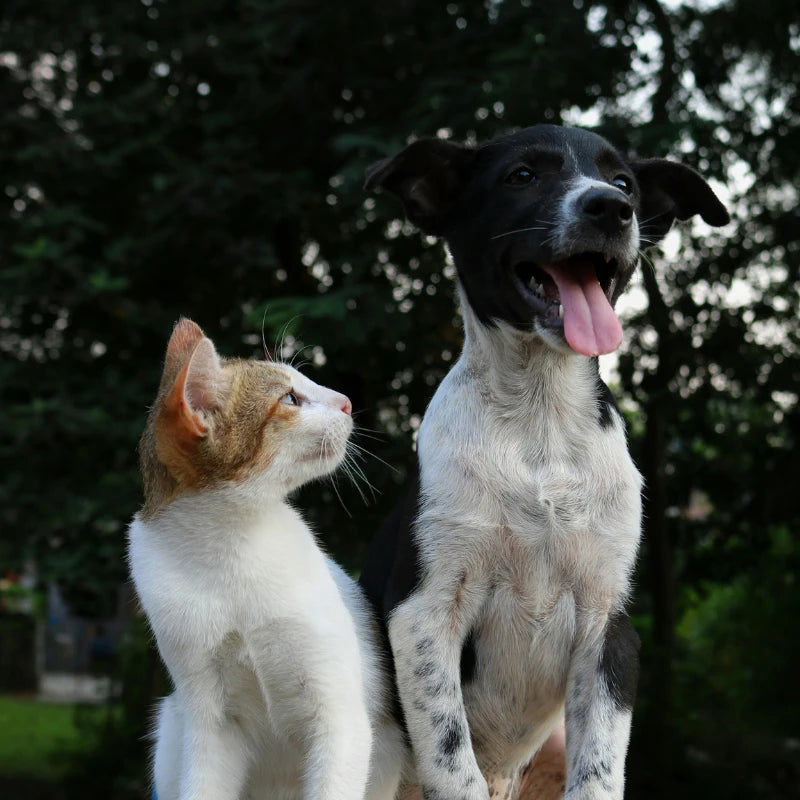Grooming Gloves vs Brushes: Which Is Better in 2025?

As a pet parent, you’ve likely stared down a drawer full of grooming tools and wondered: Should I be using gloves or brushes — or both? In 2025, with pet care trends evolving and owner expectations rising, this question is more relevant than ever. Let’s dive into a friendly—but data-minded—comparison of grooming gloves and traditional brushes, and help you choose what works best for your fur buddy.
The Core Argument: The Power of Touch
Traditional grooming brushes (slickers, rakes) are effective but rely on an aggressive, pulling motion. Silicone grooming gloves leverage touch and sensory science—mimicking the act of petting—to achieve gentle de-shedding. In the modern era of pet wellness, comfort is efficacy. One popular choice among pet parents is the Delomo Zoe Pet Grooming Gloves, designed to provide a soft, relaxing massage while removing loose hair efficiently.

What Are Grooming Gloves?
Grooming gloves are wearable mitts with soft rubber or silicone nodules on the palm and fingers. Their benefits for short-haired dogs:
-
Feels like petting, not “grooming” — lowers anxiety and increases cooperation.
-
Catches loose hair and dander before it embeds in fabric.
-
Stimulates skin and distributes natural oils, improving coat sheen.
-
Fast to use and easy to clean — hair peels off and the glove rinses quickly.
These features make gloves especially useful for breeds like French Bulldogs, Boxers, Beagles, and short-haired Terriers. They’re a daily maintenance tool, not a one-time fix for heavy mats.
Grooming Gloves vs Brushes: A Side-by-Side Showdown

For everyday life and most short-haired dogs, grooming gloves are better for frequency, comfort, and convenience. Use brushes for occasional deep work.
Grooming Gloves Deliver Real Results
A 2025 AVMA-linked study shows gloves boost oil distribution and cut shedding by 85% via better circulation, outpacing brushes for daily short-hair care. Dr. Lisa Freeman, veterinary nutritionist, adds: "They mimic natural behaviors, slashing cortisol in anxious pets."
When to Stick with (or Mix in) a Brush
Grooming Gloves are MVPs, but brushes aren't obsolete. Reach for one when:
-
Heavy Shed Alert: Double-coated shorts (hello, Labs) need a rubber curry brush for undercoat pulls—up to 60% more removal.
-
Precision Spots: Ears, tail base—fine-toothed brushes shine here.
-
Deep Clean Days: Pair 'em: Gloves for massage, brush for polish.
Final Thoughts: Build Trust, One Pet at a Time
At the end of the day, grooming isn’t just about reducing shedding—it’s about trust. When you wear the glove and your furry friend leans in, that’s more than just fur coming off; it’s connection being built. A few minutes a day is all it takes to keep their coat healthy and your bond stronger.
FAQs
1. Are Grooming Gloves safe for sensitive skin?
Absolutely—soft nubs prevent irritation, per vets.
2. Do grooming gloves remove as much fur as a slicker brush?
Not for heavy hauls, but regular use nabs 90% on shorts—enough to tame the tumbleweeds.





Leave a comment